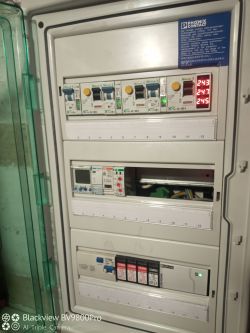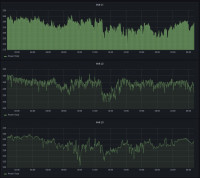Hello colleagues.
I need help writing a letter to PGE to lower the voltage in the network. I have already written one letter and received the answer in the attached photos. I called the case handler.
The answer I got in short is that I should set the inverter to reduce power, or to consume energy on a regular basis. I have 13kW panels and there are problems with the production of more than 7kW. So I explain to him that I do not intend to reduce anything and that I plan to expand the installation by another 4kW because this is what I need to balance myself on a yearly basis. And I am trying to convince you that the prosumer is to consume energy on an ongoing basis and not store it in the network for the winter. Come on shock.
The voltage that prevails in the network during a sunny day is even 260V. Today, even with the fog and the production at the level of 300 W per phase, the voltage was 250V and this one tells me that it is the fault of the photovoltaic. I presented them with the measurements at 9 p.m. with a voltage of 251V and this is also the photovalta's fault.
From 22.00 to 6.00 they lower the voltage on the MV and then I have a voltage of 230-235V.
I tell him how to a normal peasant to lower the taps by 5% and he will be calm. And the fact that they have 40 meters on this line and they will not turn off the electricity twice a year because in winter it will probably have to be raised. I will add that I am the last one on the line and I have never noticed that my voltage was too low.
Summing up, he said that he did not lower because despite 252V by 21h they are normal.
I can set my inverter to 270V but I think this will be the last resort.
PS.
No more than 40kW of installations are installed on this transformer, half of which are oriented to the west.
So please help me write another letter.
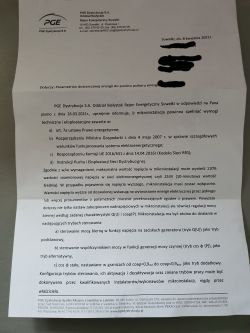 image1
image1 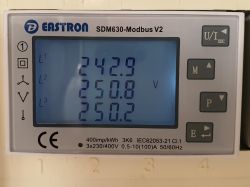

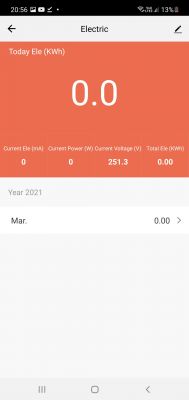
Regards, Przemek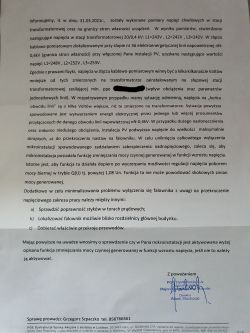
I need help writing a letter to PGE to lower the voltage in the network. I have already written one letter and received the answer in the attached photos. I called the case handler.
The answer I got in short is that I should set the inverter to reduce power, or to consume energy on a regular basis. I have 13kW panels and there are problems with the production of more than 7kW. So I explain to him that I do not intend to reduce anything and that I plan to expand the installation by another 4kW because this is what I need to balance myself on a yearly basis. And I am trying to convince you that the prosumer is to consume energy on an ongoing basis and not store it in the network for the winter. Come on shock.
The voltage that prevails in the network during a sunny day is even 260V. Today, even with the fog and the production at the level of 300 W per phase, the voltage was 250V and this one tells me that it is the fault of the photovoltaic. I presented them with the measurements at 9 p.m. with a voltage of 251V and this is also the photovalta's fault.
From 22.00 to 6.00 they lower the voltage on the MV and then I have a voltage of 230-235V.
I tell him how to a normal peasant to lower the taps by 5% and he will be calm. And the fact that they have 40 meters on this line and they will not turn off the electricity twice a year because in winter it will probably have to be raised. I will add that I am the last one on the line and I have never noticed that my voltage was too low.
Summing up, he said that he did not lower because despite 252V by 21h they are normal.
I can set my inverter to 270V but I think this will be the last resort.
PS.
No more than 40kW of installations are installed on this transformer, half of which are oriented to the west.
So please help me write another letter.
 image1
image1 


Regards, Przemek




